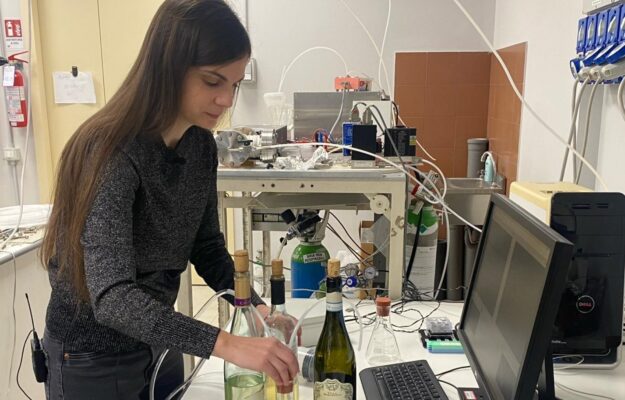A real “electronic nose”, invented in Italy, that can be used to recognize the freshness of a wine and and its origin: scientist Sonia Freddi, in the laboratories of the Physics Department of the Catholic University of Brescia, created it. The instrument is based on the fact that all foods and beverages emit particular gas molecules, which can indicate whether a product is fresh or spoiled: the "nose" detects these biomarker molecules, thanks to the analysis of volatile components, and can potentially be applied in a variety of fields, such as quality control, freshness and origin of products. A discovery that paves the way for a wide range of tests for quality control.
Wine, in particular, is characterized by particular organoleptic and volatile components, 800 different ones, which identify not only its chemical composition or the type of grape used, but also its origin. In recent years, the wine industry has been looking for faster and more reliable techniques to check the origin of DOC or DOCG wines: the use of an “electronic nose”, thanks to the high sensitivity of sensors, is a technique that is gaining momentum in this area.
The instrument was tested in the laboratory on various sample substances, such as ammonia, acetone and acetic acid, indicators of wine adulteration. Next came the actual testing of a variety of wines, both for freshness and for the recognition of different types of wine. A variety of wines, white and red, produced in Lombardy (Pinot grigio, Pinot noir, Lugana, Chardonnay, Sauvignon, Prosecco) were tested. The electronic nose proved capable both of recognizing the freshness and adulteration of a generic white wine and of recognizing the various wines tested with good accuracy.
Copyright © 2000/2025
Contatti: info@winenews.it
Seguici anche su Twitter: @WineNewsIt
Seguici anche su Facebook: @winenewsit
Questo articolo è tratto dall'archivio di WineNews - Tutti i diritti riservati - Copyright © 2000/2025









































































































































































































